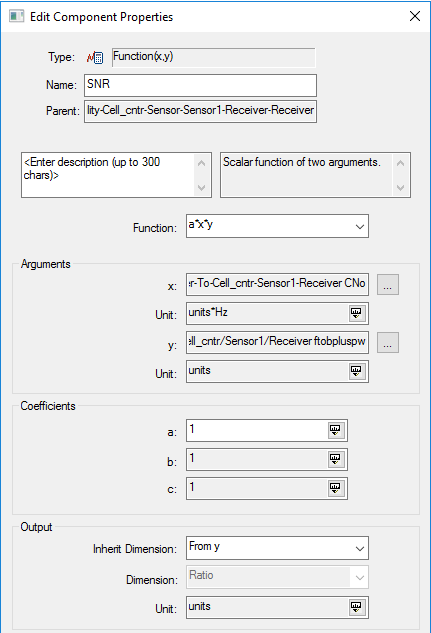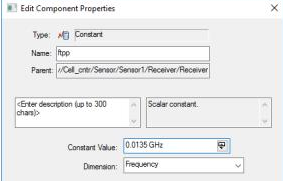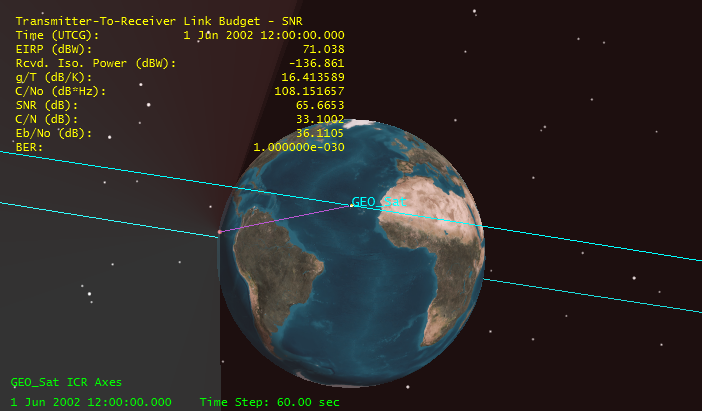Custom Transmission and Computing Signal-to-Noise Ratio
- Feb 20, 2017
- Article
-
 Analysis Workbench
Analysis Workbench
In this blog, I am going to explain how to compute the signal-to-noise ratio (SNR) for a custom transmission based on existing Communications Channel parameters in STK. The SNR parameter can be computed based on Link Budget parameters calculated in STK along with other inputs by using the Analysis Workbench (AWB) and reports. Here are some sample values:
Example (1)
Example Transmission of 625/50 television by INTELSAT
ftpp = peak-to-peak frequency deviation (Hz)
ftpp = 15.0e6 Bn = Noise Bandwidth at Receiver (Hz)
Bn = 5.0e6 PW = improvement factor due to pre-emphasis and de-emphasis and weighting factor (dB)
PW = 13.2 SNR (dB) = 3/2 * (fttp/Bn)^2 * (1/Bn) * pw * C/NoExample (2)
Example Transmission by ASTRA Satellite Television
ftpp = peak-to-peak frequency deviation (Hz)
ftpp = 13.5e6
Bn = Noise Bandwidth at Receiver (Hz)
Bn = 5.0e6
PW = improvement factor due to pre-emphasis and de-emphasis and weighting factor (dB)
PW = 13.2
SNR (dB) = 3/2 * (fttp/Bn)^2 * (1/Bn) * pw * C/No- Create a transmitter on a satellite.
- Create a receiver on a ground terminal.
- Compute Access.
- Create a Constant type Scalar Calculation for the peak-to-peak frequency deviation (ftpp), the Noise Bandwidth at the Receiver (Bn), and improvement factor (PW).
- Create a Data Element type Scalar Calculation for the C/No using the Access Object.
- Using a Scalar manipulation through functions, create the SNR equation for the Access from the above examples.





